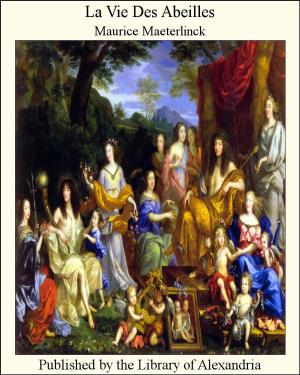Descriptive Catalogue of Photographs of North American Indians
Nonfiction, Religion & Spirituality, New Age, History, Fiction & Literature| Author: | W. H. Jackson | ISBN: | 9781465521811 |
| Publisher: | Library of Alexandria | Publication: | July 29, 2009 |
| Imprint: | Library of Alexandria | Language: | English |
| Author: | W. H. Jackson |
| ISBN: | 9781465521811 |
| Publisher: | Library of Alexandria |
| Publication: | July 29, 2009 |
| Imprint: | Library of Alexandria |
| Language: | English |
Office of United States Geological and Geographical Survey of the Territories, Washington, D. C., November 1, 1877. The collection of photographic portraits of North American Indians described in the following "Catalogue" is undoubtedly the largest and most valuable one extant. It has been made at great labor and expense, during a period of about twenty-five years, and now embraces over one thousand negatives, representing no less than twenty-five tribes. Many of the individuals portrayed have meanwhile died; Others, from various causes, are not now accessible; the opportunity of securing many of the subjects, such as scenes and incidents, has of course passed away. The collection being thus unique, and not to be reproduced at any expenditure of money, time, or labor, its value for ethnological purposes cannot easily be over-estimated. Now that the tribal relations of these Indians are fast being successively sundered by the process of removal to reservations, which so greatly modifies the habits and particularly the style of dress of the aborigines, the value of such a graphic record of the past increases year by year; and there will remain no more trustworthy evidence of what the Indians have been than that afforded by these faithful sun-pictures, many of which represent the villages, dwellings, and modes of life of these most interesting people, and historical incidents of the respective tribes, as well as the faces, dresses, and accoutrements of many prominent individuals. Those who have never attempted to secure photographs and measurements or Other details of the physique of Indians, in short, any reliable statistics of individuals or bands, can hardly realize the obstacles to be overcome. The American Indian is extremely superstitious, and every attempt to take his picture is rendered difficult if not entirely frustrated by his deeply-rooted belief that the process places some portion of himself in the power of the white man, and his suspicion that such control may be used to his injury. No prescribed regulations for the taking of photographs, therefore, are likely to be fully carried out. As a rule, front and profile views have been secured whenever practicable. Usually it is only when an Indian is subjected to confinement that those measurements of his person which are suitable for anthropological purposes can be secured. In most cases the Indian will not allow his person to be handled at all, nor submit to any inconvenience whatever. Much tact and perseverance are required to overcome his superstitious notions, and in many cases, even of the most noted chiefs of several tribes, no portrait can be obtained by any inducement whatever. If, therefore, the collection fails to meet the full requirements of the anthropologist, it must be remembered that the obstacles in the way of realizing his ideal of a perfect collection are insurmountable
Office of United States Geological and Geographical Survey of the Territories, Washington, D. C., November 1, 1877. The collection of photographic portraits of North American Indians described in the following "Catalogue" is undoubtedly the largest and most valuable one extant. It has been made at great labor and expense, during a period of about twenty-five years, and now embraces over one thousand negatives, representing no less than twenty-five tribes. Many of the individuals portrayed have meanwhile died; Others, from various causes, are not now accessible; the opportunity of securing many of the subjects, such as scenes and incidents, has of course passed away. The collection being thus unique, and not to be reproduced at any expenditure of money, time, or labor, its value for ethnological purposes cannot easily be over-estimated. Now that the tribal relations of these Indians are fast being successively sundered by the process of removal to reservations, which so greatly modifies the habits and particularly the style of dress of the aborigines, the value of such a graphic record of the past increases year by year; and there will remain no more trustworthy evidence of what the Indians have been than that afforded by these faithful sun-pictures, many of which represent the villages, dwellings, and modes of life of these most interesting people, and historical incidents of the respective tribes, as well as the faces, dresses, and accoutrements of many prominent individuals. Those who have never attempted to secure photographs and measurements or Other details of the physique of Indians, in short, any reliable statistics of individuals or bands, can hardly realize the obstacles to be overcome. The American Indian is extremely superstitious, and every attempt to take his picture is rendered difficult if not entirely frustrated by his deeply-rooted belief that the process places some portion of himself in the power of the white man, and his suspicion that such control may be used to his injury. No prescribed regulations for the taking of photographs, therefore, are likely to be fully carried out. As a rule, front and profile views have been secured whenever practicable. Usually it is only when an Indian is subjected to confinement that those measurements of his person which are suitable for anthropological purposes can be secured. In most cases the Indian will not allow his person to be handled at all, nor submit to any inconvenience whatever. Much tact and perseverance are required to overcome his superstitious notions, and in many cases, even of the most noted chiefs of several tribes, no portrait can be obtained by any inducement whatever. If, therefore, the collection fails to meet the full requirements of the anthropologist, it must be remembered that the obstacles in the way of realizing his ideal of a perfect collection are insurmountable















